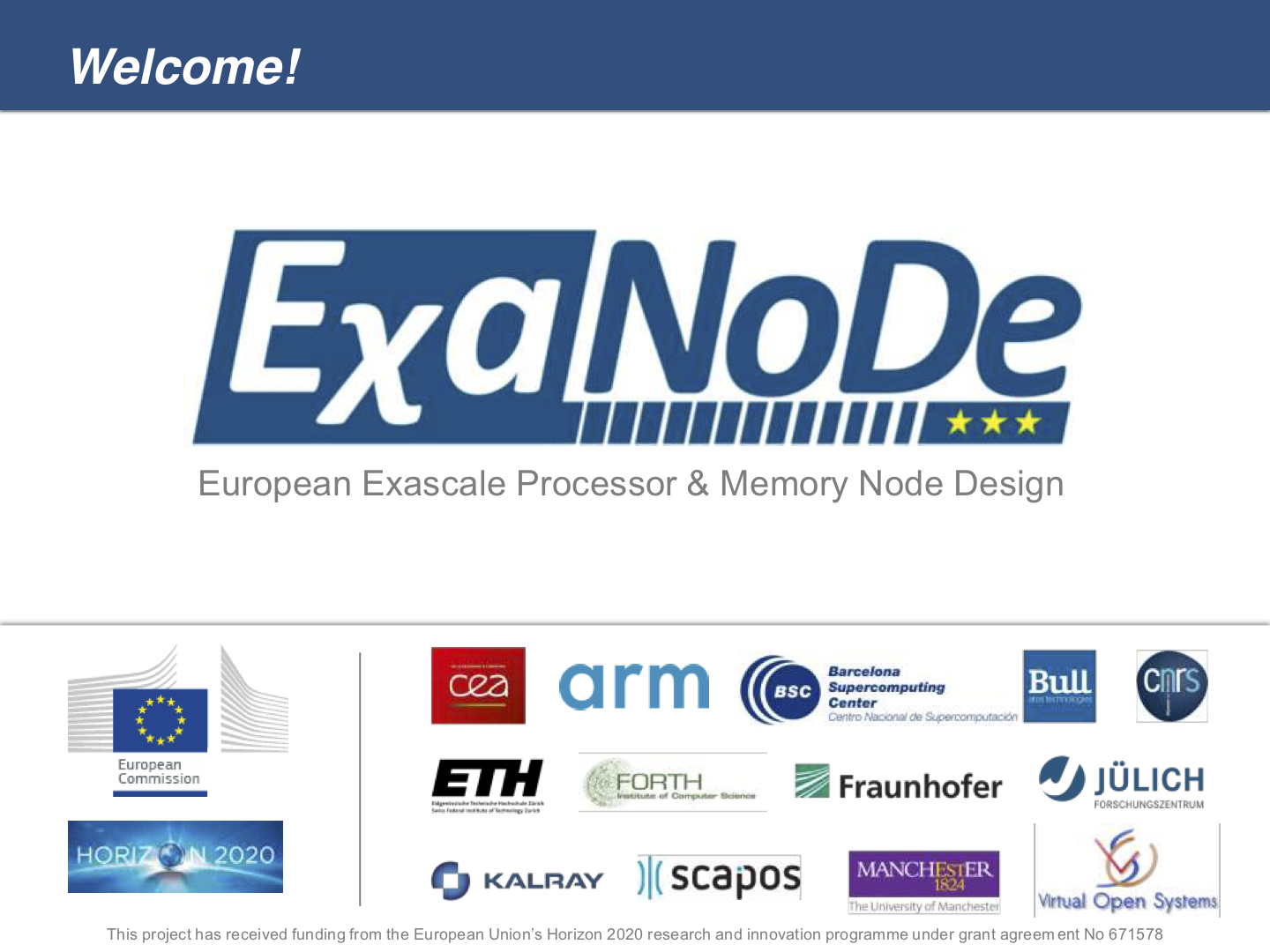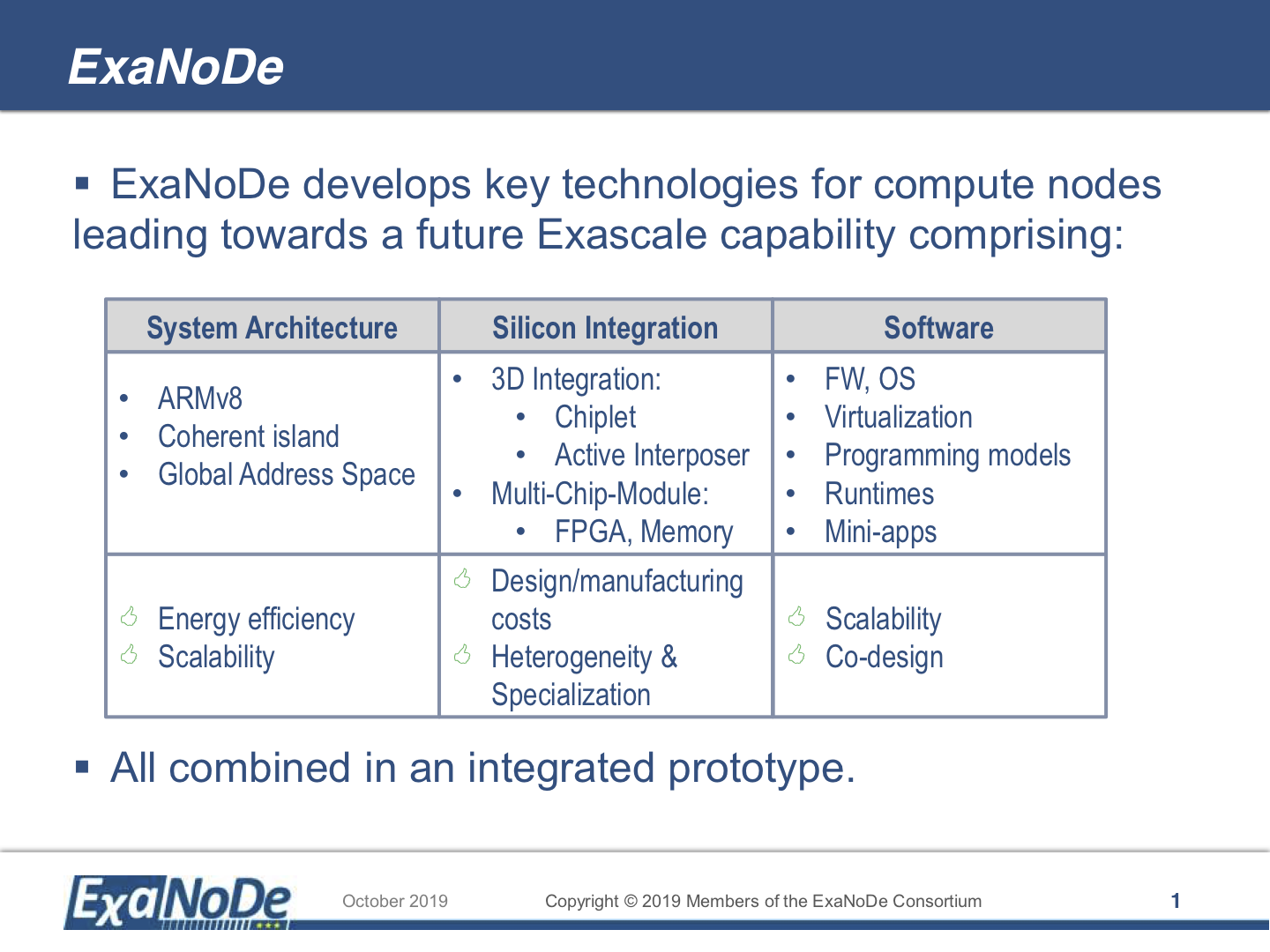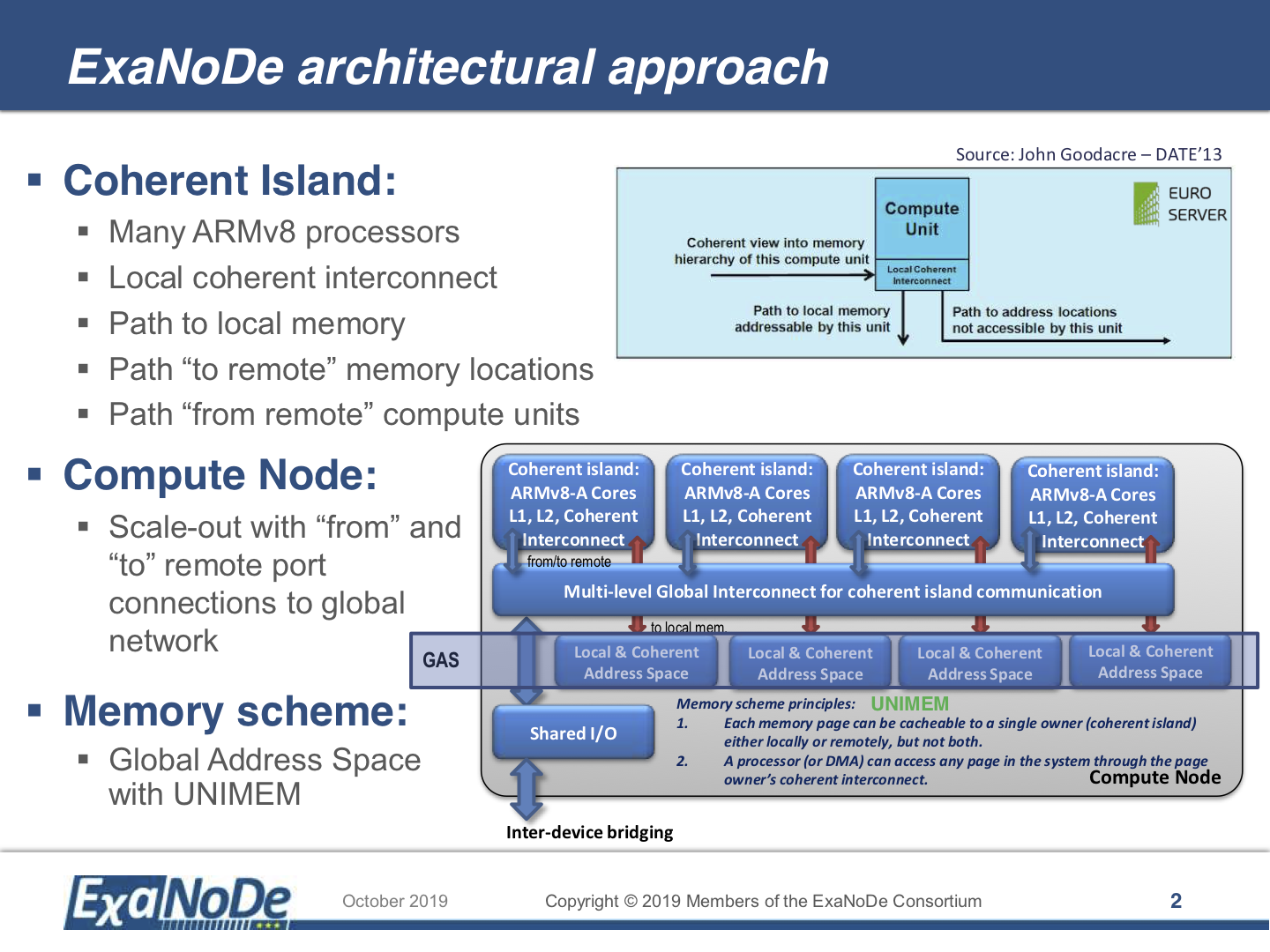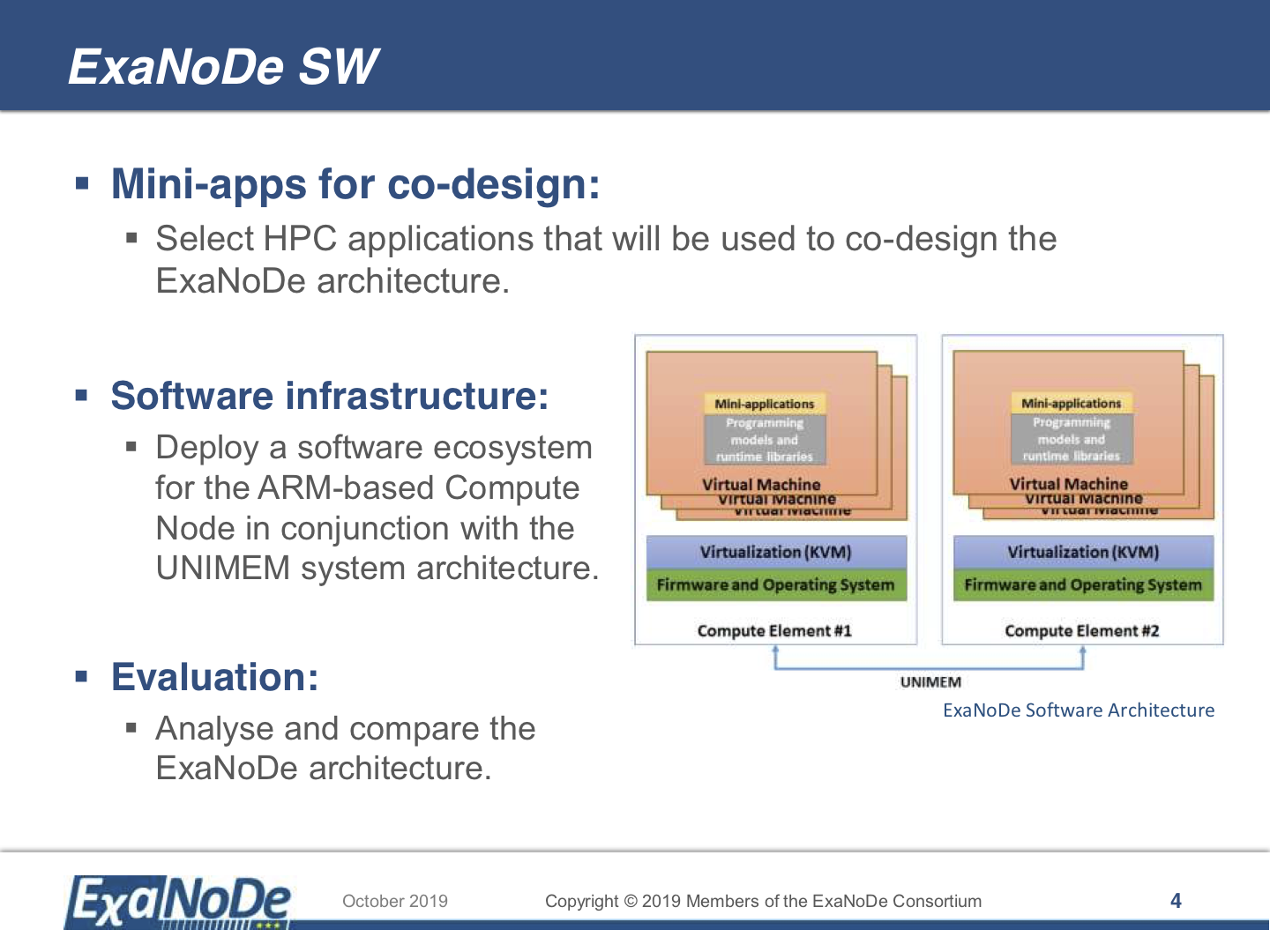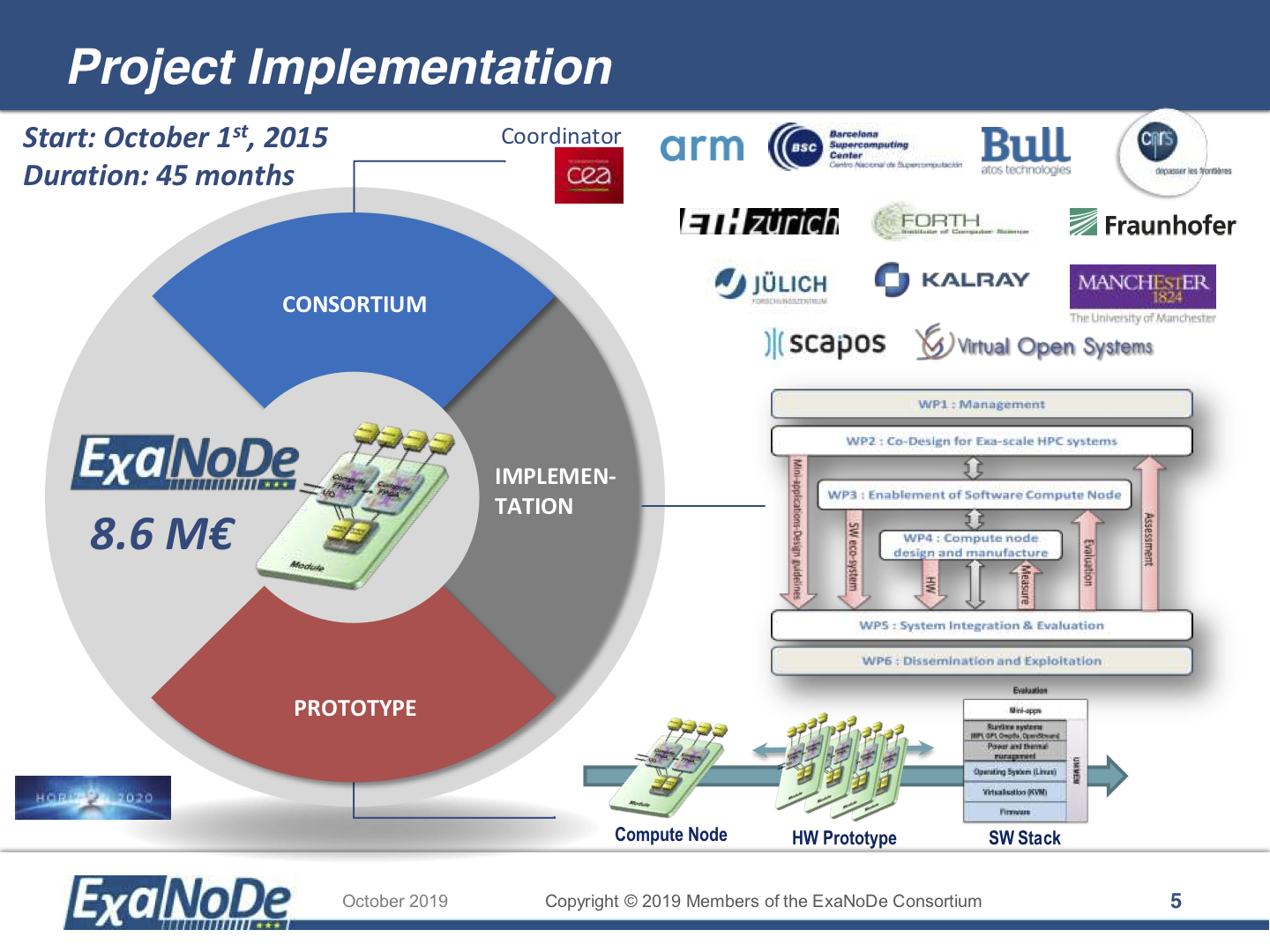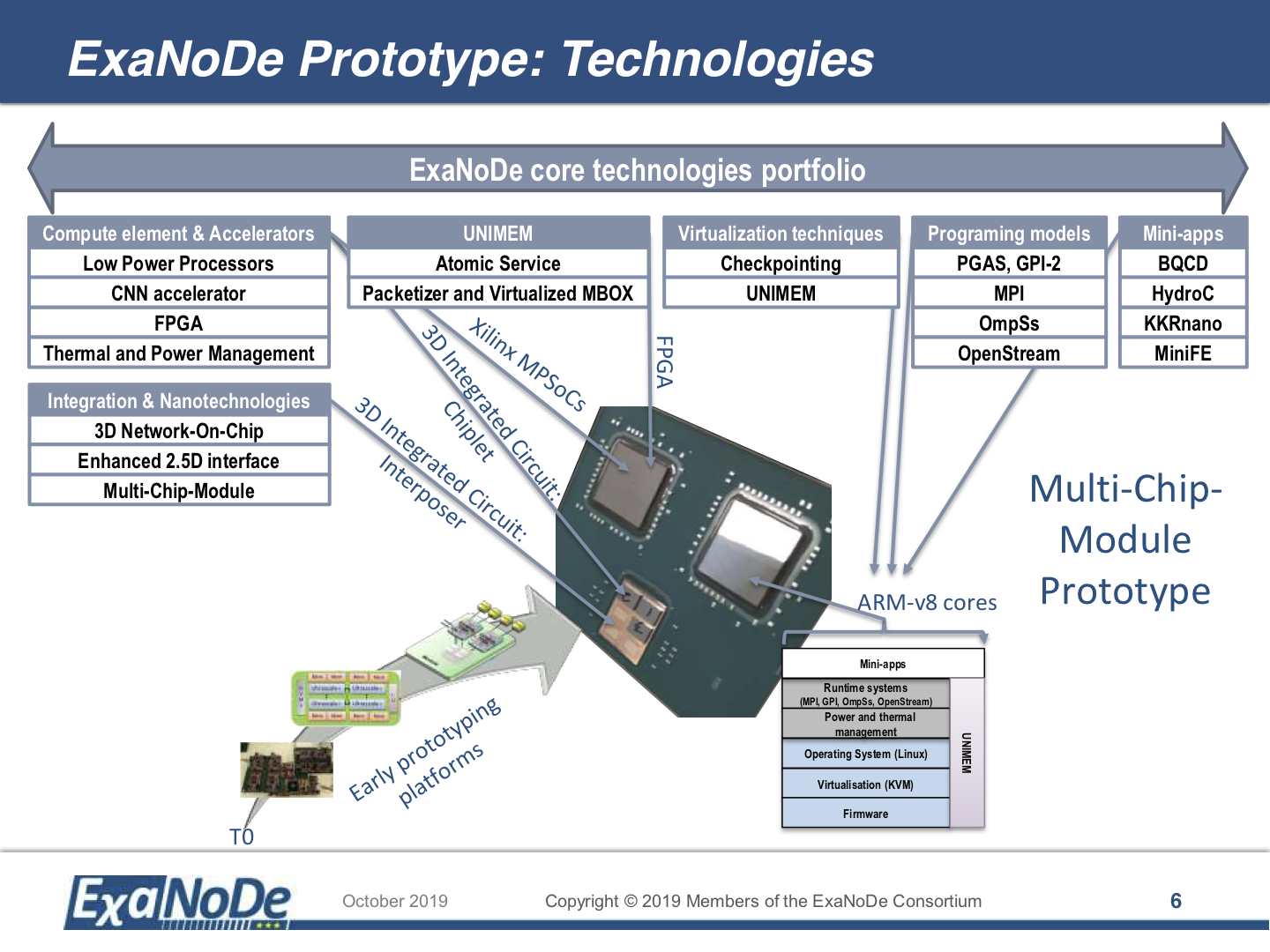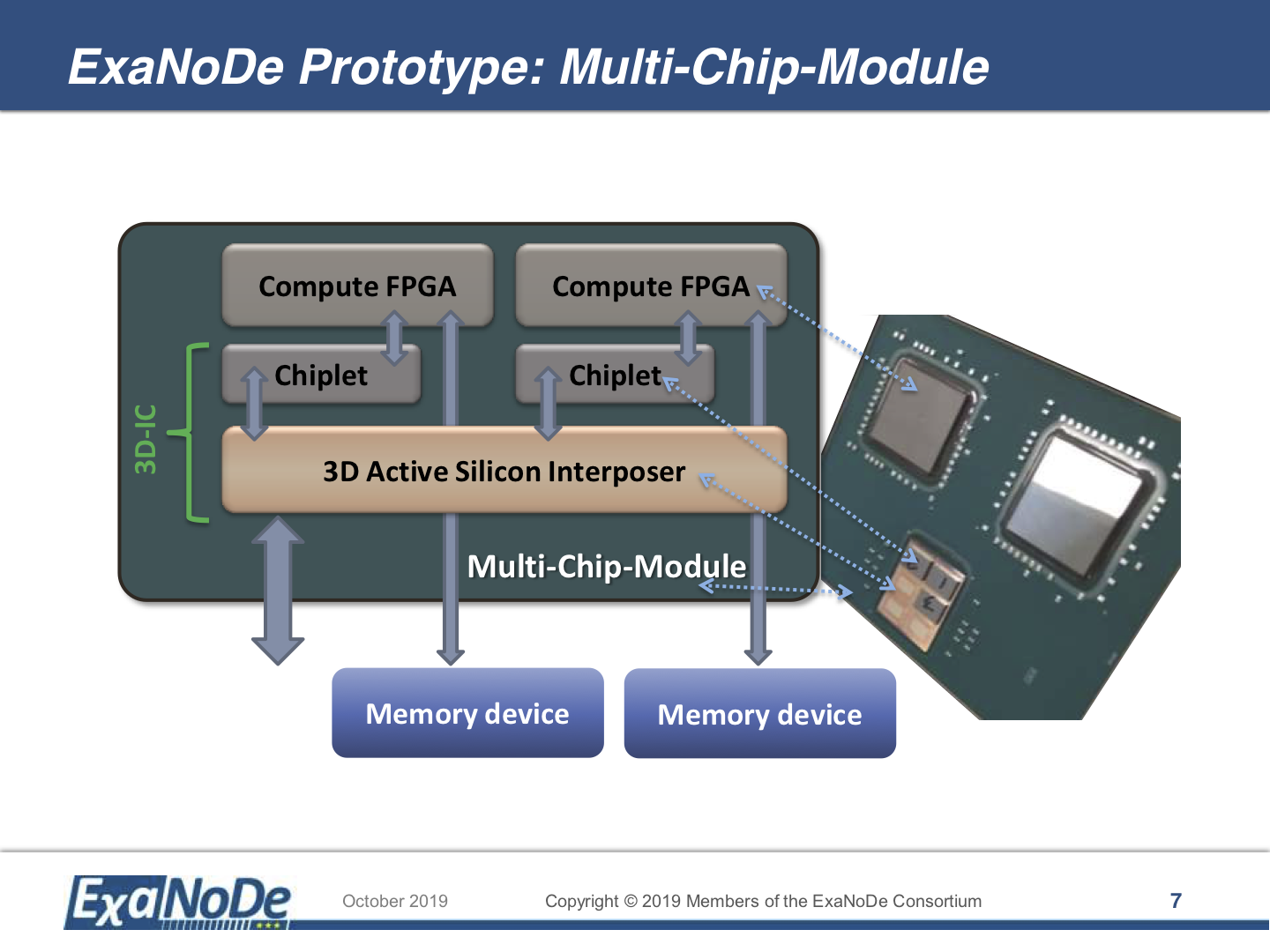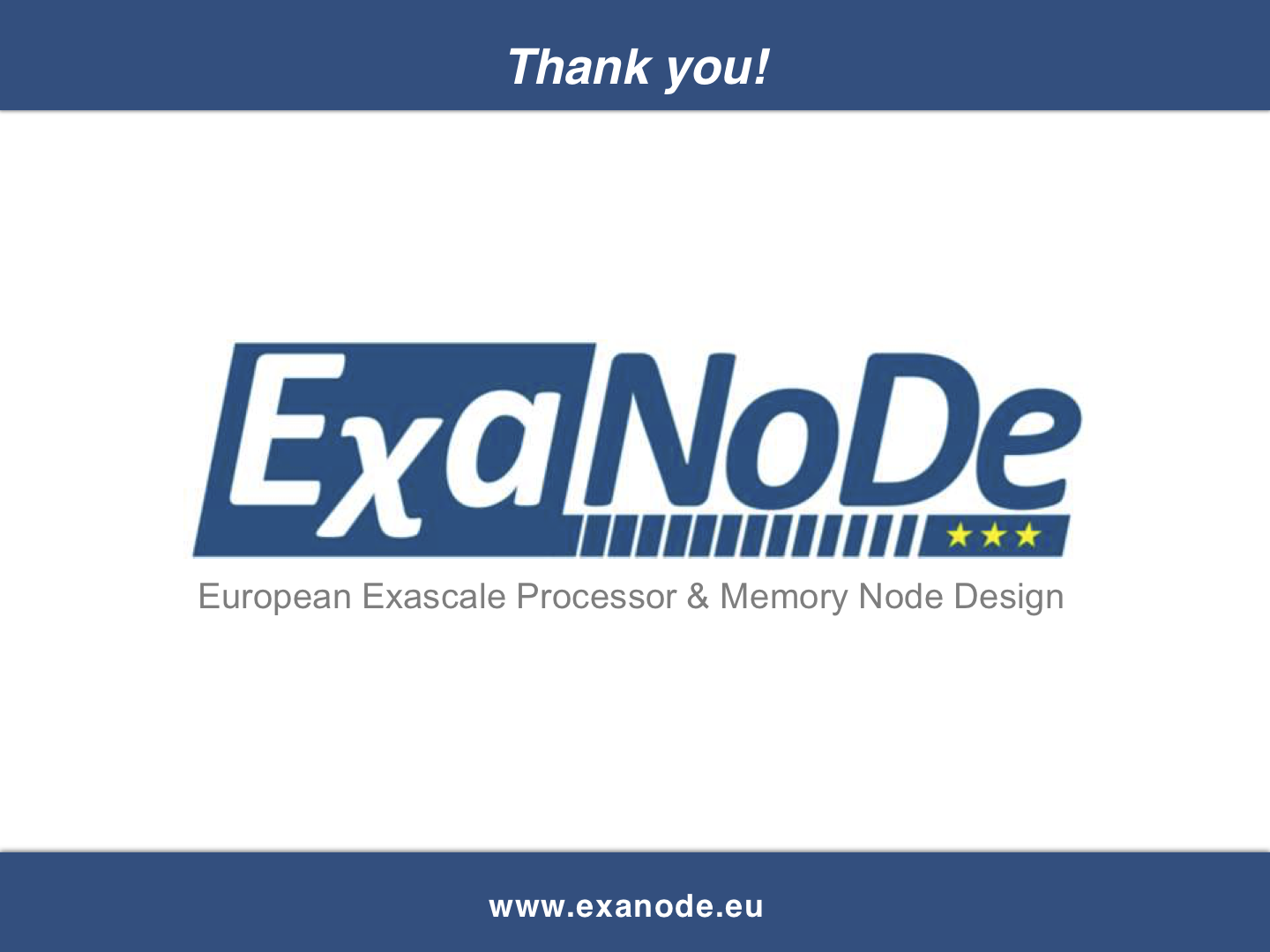Introduction to the ExaNoDe project
ExaNoDe has built on multiple European initiatives for scalable computing, utilizing a low-power architecture and advanced nanotechnologies. It drawed heavily on the Unimem memory and system design paradigm defined within the EUROSERVER FP7 project, providing low-latency, high-bandwidth resilient, memory access, targeting scalability to Exabyte levels.
Each aspect of ExaNoDe is aligned with the goals of ETP4HPC. The work was steered by first-hand experience and analysis of high-performance applications and their requirements.
ExaNoDe had a fruitful collaboration with the two European projects ECOSCALE (www.ecoscale.eu) and ExaNeSt (www.exanest.eu). More information can be found here.
The ExaNoDe compute element aims towards Exascale compute goals through:
- Integration of the most advanced high-performance, low-power processors and accelerators supported by research and innovation in the deployment of associated nanotechnologies and in the mechanical requirements to enable the development of a high-density, high-performance integrated compute element with advanced thermal characteristics and connectivity to the next generation of system interconnect and storage;
- Undertaking essential research to ensure that the ExaNoDe compute element provides necessary support for HPC applications including I/O and storage virtualization techniques, operating system and semantically aware runtime capabilities and PGAS, OpenMP and MPI paradigms;
- The development of an integrated prototype to enable the evaluation of Unimem for the deployment of multiple compute elements and to leverage the potential of the ExaNoDe approach for HPC applications.
Please click the charts for fullscreen view

